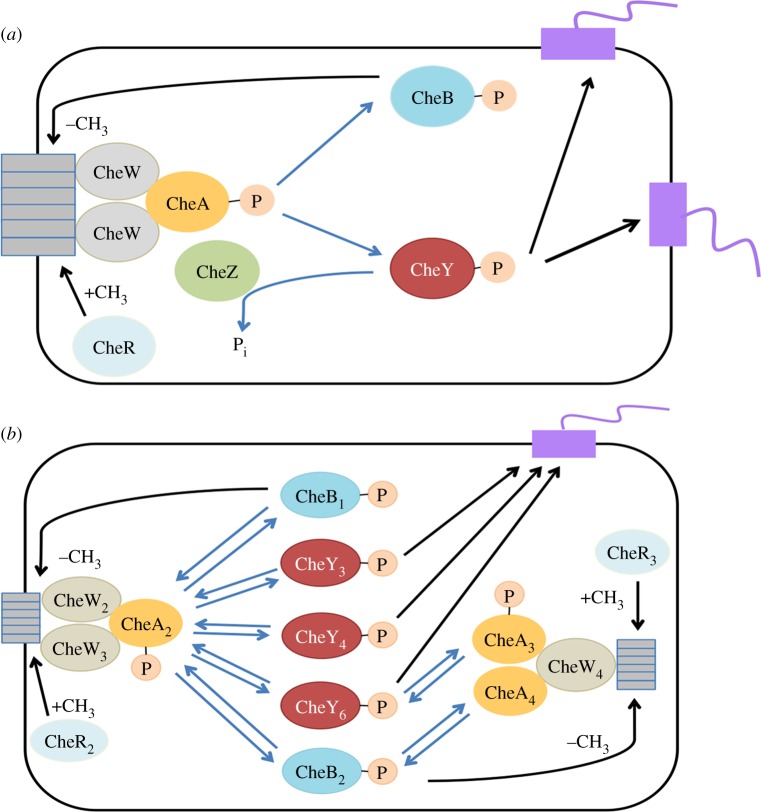Figure 1.
Chemotaxis signalling pathway in (a) E. coli and (b) R. sphaeroides (adapted from [8]). Blue arrows indicate phosphotransfer. (a) In E. coli, attractant binding to the transmembrane receptors inhibits CheA autophosphorylation. Subsequently, CheA-P transfers the phospho group to CheY, allowing CheY-P to bind flagellar motors for ‘tumbling’. CheZ phosphatase dephosphorylates CheY-P to enable ‘running’. CheR and CheB are antagonistic proteins that fine-tune sensitivity of the receptors by methylation and demethylation, respectively. (b) In R. sphaeroides, transmembrane chemoreceptors can sense external concentration of attractants, and the cell presumably responds by CheA2 autophosphorylation. CheA2-P then transfers phospho groups to a range of response regulators including CheY3, CheY4, CheY6, CheB1 and CheB2. Cytosolic chemoreceptors may sense the internal metabolic state. When cytosolic cluster is activated, CheA3 and CheA4 cooperate to phosphorylate CheY6 and CheB2. (Online version in colour.)

